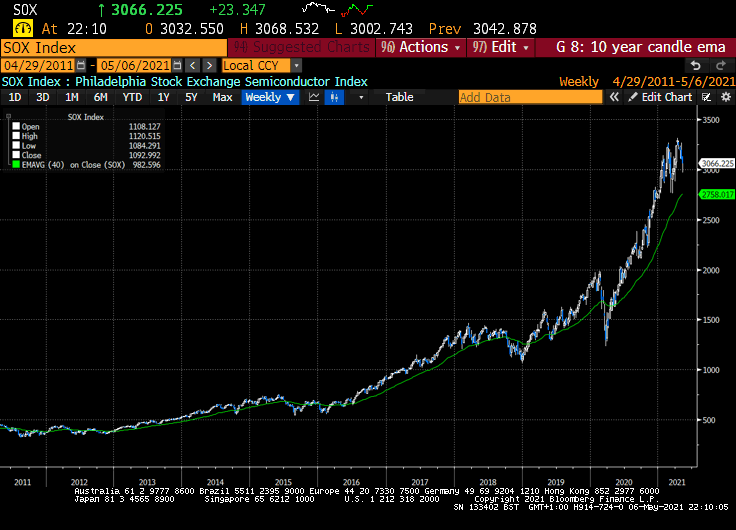The Chip Shortage Keeps Getting Worse. Why Can't We Just Make More?
This article from Bloomberg may be of interest to subscribers. Here is a section:
Chip plants run 24 hours a day, seven days a week. They do that for one reason: cost. Building an entry-level factory that produces 50,000 wafers per month costs about $15 billion. Most of this is spent on specialized equipment—a market that exceeded $60 billion in sales for the first time in 2020.
Three companies—Intel, Samsung and TSMC—account for most of this investment. Their factories are more advanced and cost over $20 billion each. This year, TSMC will spend as much as $28 billion on new plants and equipment. Compare that to the U.S. government’s attempt to pass a bill supporting domestic chip production. This legislation would offer just $50 billion over five years.
Once you spend all that money building giant facilities, they become obsolete in five years or less. To avoid losing money, chipmakers must generate $3 billion in profit from each plant. But now only the biggest companies, in particular the top three that combined generated $188 billion in revenue last year, can afford to build multiple plants.
Semiconductor factories are largely automated so they were not particularly impacted by the global lockdowns. Demand for their products surged during the lockdowns. Factories running on thin margins and under constant threat from obsolescence do not operate with a lot of spare capacity. That is the primary reason we now have a semiconductor availability issue. The demand curve has accelerated well above the ability of supply to keep up. The increasing dependence of the automotive sector on chips has been building for a while and will contribute to the investment case for more supply.
In predicting how long this condition will last demand is more important than supply. It takes years and billions in solid investment commitments to build a new factory. With countries from the USA, Europe and China laying plans to invest in additional new supply it suggests a crash in prices has to be considered likely when all of that new supply comes to market. Meanwhile demand is much more elastic in the short term. The surge in demand for consumer electronics in 2020 resulted from the stay-at-home orders. Anyone who bought a new computer, phone or tablet does not need to do so again in 2021 or 2022. That removes a bulge in demand from the market even as the trend growth in demand from industry is likely to remain firm.

The Philadelphia Semiconductors Index continues to lose momentum as it reverts back towards the mean. The Stay-At-Home champions of 2020 are variously breaking lower and completing top formations. Semiconductor companies have profits and established businesses, so they will be among the last to feel the effects of the end of the pandemic but they are unlikely to be immune.


